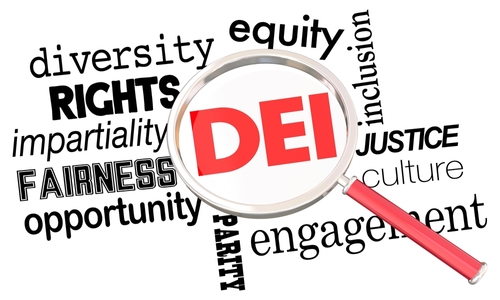|
Getting your Trinity Audio player ready...
|
The Failure of DEI and The New York Times’ Complicity in Ignoring the Truth
The recent study by the Network Contagion Research Institute and Rutgers University’s Social Perception Lab delivers a sobering indictment of modern Diversity, Equity, and Inclusion (DEI) initiatives. It finds that certain extreme DEI narratives, which frame racism as omnipresent, can actually exacerbate prejudice and foster hostility. Yet, in a troubling display of bias, major media outlets such as The New York Times and Bloomberg News reportedly chose not to publish these findings, prioritizing ideological conformity over journalistic integrity.
This editorial strongly supports the study’s findings and critiques the media’s reluctance to engage with evidence that challenges the efficacy of DEI practices. The media’s silence on such critical research not only undermines public discourse but also perpetuates ineffective, and potentially harmful, policies in corporate and public life.
The NCRI study reveals that certain anti-oppression DEI narratives can create what researchers term “hostile attribution bias”—a tendency to see racism where none exists. This heightened racial suspicion, as the study points out, can lead to punitive behaviors based on perceived, rather than actual, transgressions. In other words, DEI initiatives that promote a worldview where racism is omnipresent may inadvertently sow division and amplify prejudices.
This finding is not surprising to those who have observed the outcomes of Robin DiAngelo’s White Fragility or Ibram X. Kendi’s How to Be an Antiracist. Their work, widely adopted in DEI training, often insists that racism pervades every interaction. This approach risks teaching people to see discrimination in every corner of society, fostering fear and suspicion rather than mutual understanding. The study’s conclusion, as detailed by National Review, suggests that these methods do more harm than good—yet roughly half of the U.S. workforce has been subjected to such training in recent years.
While this study deserved widespread attention, The New York Times and Bloomberg reportedly declined to report on it. According to sources cited by National Review, journalists initially pursued the story but were instructed by editors to drop it. This reluctance reflects a broader trend within The Times, which increasingly tailors its reporting to avoid offending its activist-leaning staff.
It is telling that The New York Times justified its decision by citing the need for peer review—an excuse that conveniently overlooks its history of publishing NCRI research without such scrutiny. The inconsistency suggests editorial cowardice, as management seeks to placate its internal “woke” factions. These are the same groups that have driven out seasoned editors and reporters, creating an environment where dissenting perspectives are marginalized, if not outright silenced.
By refusing to report on the NCRI study, The New York Times and Bloomberg not only fail their readers but also reinforce the unchecked dominance of ineffective DEI practices in corporate and government institutions. DEI training has become a multibillion-dollar industry, embraced by corporations and the federal government alike. However, as the NCRI study shows, these programs often fall short of their stated goals, creating more problems than they solve.
Ignoring this research denies the public the opportunity to reevaluate DEI strategies critically. Worse, it allows organizations to continue wasting resources on initiatives that may actively harm workplace cohesion and societal trust. Without media scrutiny, there is little pressure to reform these programs or explore alternatives that might foster genuine inclusivity.
The refusal to publish the NCRI study highlights a troubling trend in modern journalism: the prioritization of ideological alignment over objective reporting. When media outlets suppress stories that challenge dominant narratives, they abandon their responsibility to inform the public. This silence fosters intellectual stagnation, depriving society of the robust debate necessary for progress.
The Times’ editorial decisions increasingly reflect the influence of its internal “social justice warrior” contingent, as noted by National Review. These factions have already driven out prominent voices within the organization, and their growing influence threatens to undermine the paper’s credibility further. If left unchecked, this trend will transform one of the world’s most respected newspapers into little more than an echo chamber for a single worldview.
It is essential that the media confront difficult truths, even when they challenge popular ideologies. The NCRI study provides an opportunity to reevaluate DEI practices and their unintended consequences. By ignoring such research, outlets like The New York Times fail not only their readers but also the broader society they purport to serve.
DEI should not be a sacred cow, immune to criticism. If its current form exacerbates the very problems it seeks to solve, then reform is not only warranted but necessary. The media’s role is to facilitate this conversation, not to suppress it.
As journalism succumbs to ideological conformity, the public must demand better. The responsibility to foster meaningful dialogue and accountability rests not just with the media but with all of us. It is time to challenge the narrative that suppressing dissent is progress—because, as the NCRI study shows, the cost of such silence is far too high.





